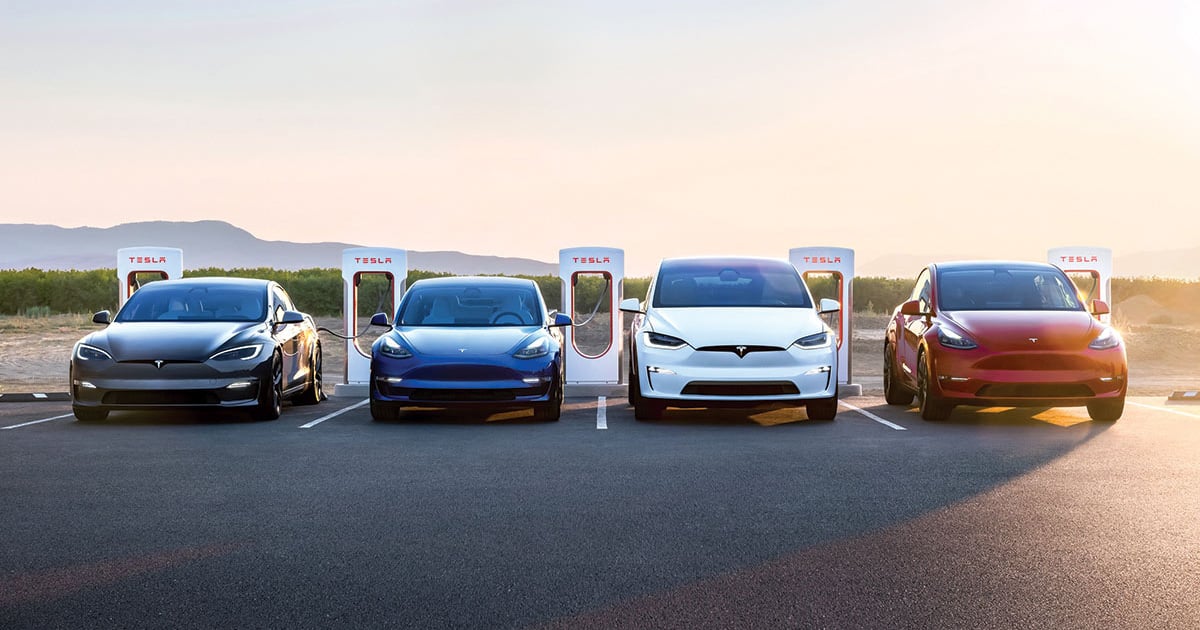
Tesla vehicles are so common along the California coast that EV enthusiasts consider them the new Hondas and Toyotas of the local market. But in large swaths of the American heartland, EVs in general remain rare.
The scarcity of EVs in 22 noncoastal states from Nevada to West Virginia will change as more mainstream models hit the market and charging infrastructure improves, S&P Global said in a November report.
“More acceptance and much broader consumer awareness is resulting in a natural progression of [EV] adoption from the coasts to the heartland,” said Tom Libby, an analyst at the S&P Global Mobility division. The data firm chose 22 states to represent the heartland, although definitions of the term vary.
While automakers once restricted EV sales to states with zero-emissions mandates, new EV models are being sold across the nation. And the new models come in a greater variety of body styles to better address consumer taste, the report said.
“Automakers are beginning to produce more mainstream electric vehicles,” said James Martin, another analyst at S&P Global. “Availability of these vehicles will most likely be a factor in spurring installation of more charging infrastructure.”
Recently launched EV models include compact crossovers and pickup trucks, which represent popular vehicle segments regardless of fuel type, according to separate data by Experian.
Notable new EVs this year — by sales — include the Ford F-150 Lightning pickup and the Kia EV6 crossover.
Range anxiety
While most EV drivers charge at home, range anxiety remains a significant obstacle for buyers who take regular trips away from home, according to industry surveys, so greater investment in public chargers is also seen by analysts as a key driver of EV ownership.
The majority of public chargers are along the U.S. coasts, but new laws promoted by the Biden administration will provide significant funds to build stations in regions where EV adoption is low. The new chargers will also provide much faster charging than old ones.
“With $5 billion in electric vehicle charging network funds (and more to come) available under the Bipartisan Infrastructure Law, states are lining up for their share of federal largess,” S&P Global said. Another set of EV-related incentives is provided by the new Inflation Reduction Act.
“There is no doubt that the lack of charger availability is an influence in Midwestern states,” said Martin.
Among the states in the S&P study, Wyoming and North Dakota had the lowest national EV share, at essentially 0 percent in the January to August period. Wyoming had 146 EV sales in the period while North Dakota had 143.
As a group, EV adoption was both low and stagnant among the 22 states compared with coastal states.
“While the heartland states represent 27.1 percent of total U.S. vehicle retail sales through August, their representation in EV adoption has remained stagnant from 2021 into this year at a tepid 15.5 percent share,” S&P Global said. “Only Colorado and Nevada (and to a minuscule extent, Utah) out-punch their overall retail share in EV representation.”
Other heartland states in the study include Arkansas, Idaho, Illinois, Iowa, Kansas, Kentucky, Michigan, Minnesota, Missouri, Montana, Nebraska, Ohio, Oklahoma, South Dakota, Tennessee, West Virginia and Wisconsin.
The biggest EV markets are West Coast metropolitan areas including Los Angeles, San Francisco, San Diego and Seattle, S&P Global said. New York, Washington, D.C., Miami and Chicago are also in the top 10.
In California, Tesla is the No. 2 brand by volume after Toyota, according to the California New Car Dealers Association. Ford is No. 3 and Honda is No. 4, the association said, citing January to September registrations. Battery-electric vehicles overall represent 16 percent of California sales through September.
While noncoastal regions have a long way to go toward EV adoption, some heartland cities showed progress this year, including Chicago, Las Vegas, Missoula, Mont., and Salt Lake City, S&P Global said.
America’s heartland is likely to embrace battery-electric vehicles the way it did Asian cars decades ago — through a process that begins on the U.S. coasts and moves inward.
“The adoption of BEVs is a long-term process that needs to reach an inflection point similar to the adoption or acceptance of Asian-sourced vehicles in the U.S.,” Libby said. “That inflection point is when the product becomes generally accepted and it usually occurs when volume and exposure reach a level that influences all the reluctant outliers.”